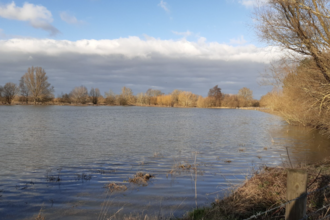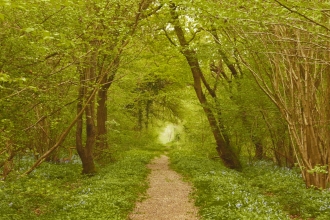Wetter winters may be bad news for many of our woodland flowers which cannot cope with waterlogged soils. They may give wild garlic an advantage over bluebells. Mild, wet winters are not good for animals that hibernate. If you’ve ever wondered why the Alps and other European mountains have so many more butterflies that we do, it’s not because they have better summers, but because cold, dry winters are good for hibernation. Otherwise, animals use up too much of their stored energy reserves, and in warm, damp conditions, chrysalids and dormant caterpillars can be attacked by fungi. And it’s not just insects - dormice may struggle to survive a warm winter, and those who hibernate low down in the woods may have been waterlogged in the last few months. And any bats woken up by winter warm spells will waste energy flying in search of insects that haven’t emerged yet.
The climate crisis: some winners and losers of wet winters
Old Sulehay Forest - Robert Enderby
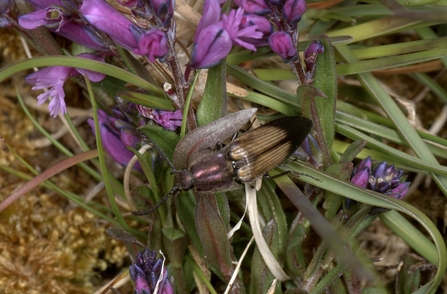
An upland click-beetle (Ctenicera cuprea) by Brian Eversham
The other significant ‘losers’ to accelerating global heating and unpredictable rainfall are species that need it cooler, or which require just the right amount of rain at the right time of year for their reproduction. The former include species which are mainly northern and western in their British distribution, for which BCN is on the southern and eastern edge of their range. The attractive grassland click-beetle (Ctenicera cuprea) has been recorded from Northamptonshire, but not for a few years. Keep your eyes open.
The shade- and moisture-loving wildlife includes most of our ferns, horsetails, mosses and liverworts. Several species have disappeared from our area in the last century, such as Lemon-scented Fern (extinct in Cambs and Beds, may still survive at one site in Northants), and others have declined and may disappear in the near future.
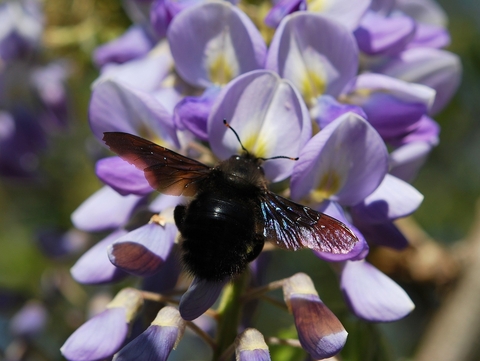
Violet carpenter bee (Xylocopa violacea), on wisteria, by Brian Eversham
As spring gets under way, it will be fascinating to see which recent colonists are thriving, and which have had a setback from the wet winter. 2021 was the first time we had evidence that Violet Carpenter Bee was breeding and over-wintering in our area (the first record was from Histon near Cambridge): that’s a species to look for, visiting spring flowers. Imagine the biggest queen bumblebee you’ve ever seen, with black, purple-shining wings – and called ‘carpenter’ because they carve their nests in rotting tree-trunks. And don’t panic if you see one - like the bumblebees, they’re gentle and won’t bother you if you leave them in peace.
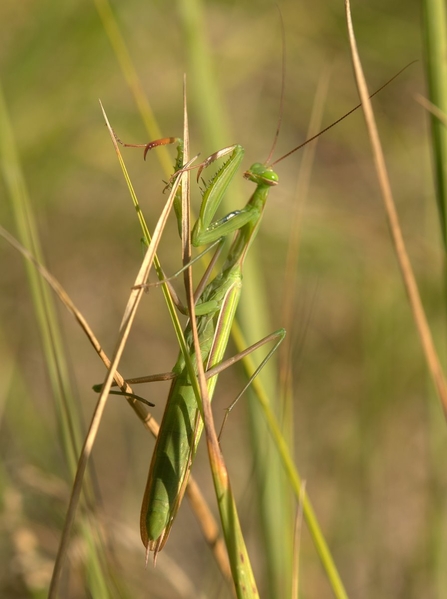
Praying mantis (M. religiosa) by Brian Eversham
Another insect arrival which it would be exciting to find locally: the European Praying Mantis. Adults are large and unmistakable. I’ve thought for years that the climate in southern England might suit them, but they are too bulky to fly more than a few metres, so I didn’t expect them to make their way here, unless they hitched a lift on a cross-channel lorry. But they’ve been found in several parts of Oxford in recent years, so are not far away. As several appeared in the same year, I wonder if someone holidaying in France came back with an egg-pod on their garden furniture. Do let us know if you see one in Beds, Cambs or Northants.
We can expect additional new colonists in future years, and southern/eastern species may expand their range and increase their abundance. But the overall impacts of the climate crisis and of extreme weather events are going to make our previously-stable habitats, such as ancient woodlands, fens and chalk downland, less predictable, favouring opportunist species and challenging those which require constant conditions for their survival.


